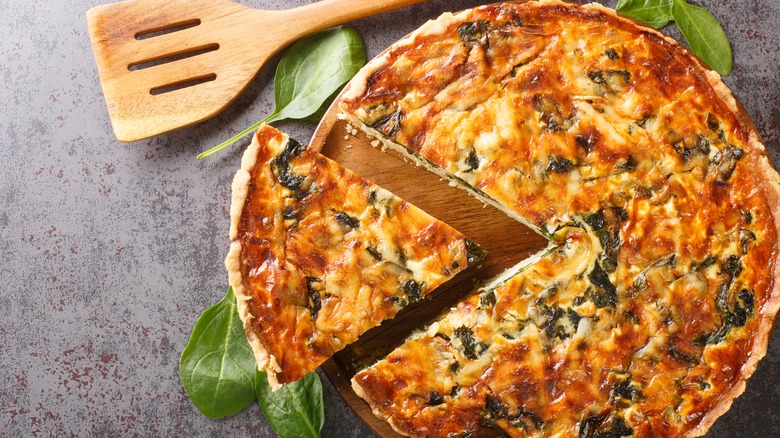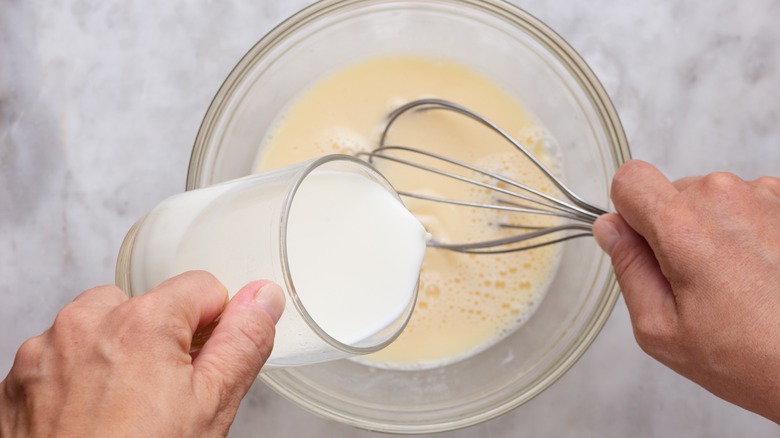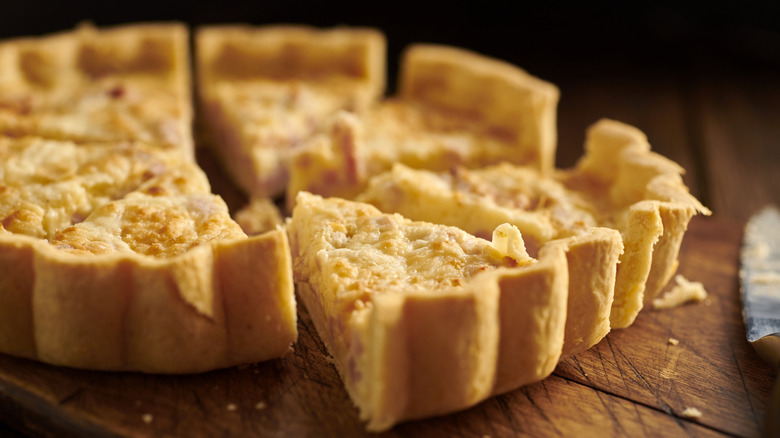The Reason You Should Whip Your Eggs When Making Quiche
The texture of a perfect quiche should be creamy, yielding, and a little jiggly in the center when removed from the oven. Having said that, we've all likely eaten our fair share of imperfect rubbery quiches that are over-firm in the middle and just miss the mark. For a tastier, tempting tart with a foolproof custardy center, whip your eggs for longer.
The extra air incorporated into the eggs makes for a softer consistency that pairs wonderfully with the texture of fried bacon, sautéed mushrooms, and crispy asparagus. When combined with flavorful, melting cheeses such as Gruyere and cheddar, you'll have all the fixings for a premium quiche that's ready to cut into chunky wedges for hearty lunches, family picnics, and cold buffets. Looking for a little more luxury? Why not add a dash of cream to the egg mixture to make a silkier quiche that melts in the mouth?
How to whip your eggs when making a quiche
Though a fork or a pair of chopsticks are great for quickly whipping eggs for a breakfast scramble, they're not the best tools for making quiche. If you're preparing the egg mixture by hand, use a French whisk or a balloon whisk to aerate it properly.
Start by placing the eggs in a large bowl and whipping them well for about three minutes. This action will incorporate lots of air into the batter, lending your quiche a softer, fluffier texture once baked. If you're making a richer, savory tart that incorporates heavy cream instead of milk, add it to the bowl at this point and whisk again for an additional four minutes. Toss in fillings such as bacon, onions, fresh herbs, and cheese before giving them a stir to coat. Finally, gently pour the mixture into your pastry case, ready for baking.
What happens to eggs when you whip them?
The whipping process gives the eggs a foamy texture because of the air pockets you've created. This, in turn, builds the foundation for a quiche with a scrumptious, yielding consistency rather than an unappealing rubbery texture. Bear in mind that if you're using a handheld electric whisk, you may not need to whisk the eggs for as long, depending on the speed and strength of the beaters. Over-whisking can have the opposite effect of what you're going for, resulting in a denser quiche.
Baking your quiche slowly at a lower temperature can also help to keep the texture of the eggs fluffy and almost custardy. Another way to guarantee your quiche is tender is to give it a little shake just before the cooking time is over. If it wobbles just a little in the center, in the same way as a custard tart, it's ready to remove. The filling will continue to cook in the residual heat. When the quiche is cooled and ready to slice, you'll be in absolute heaven.


